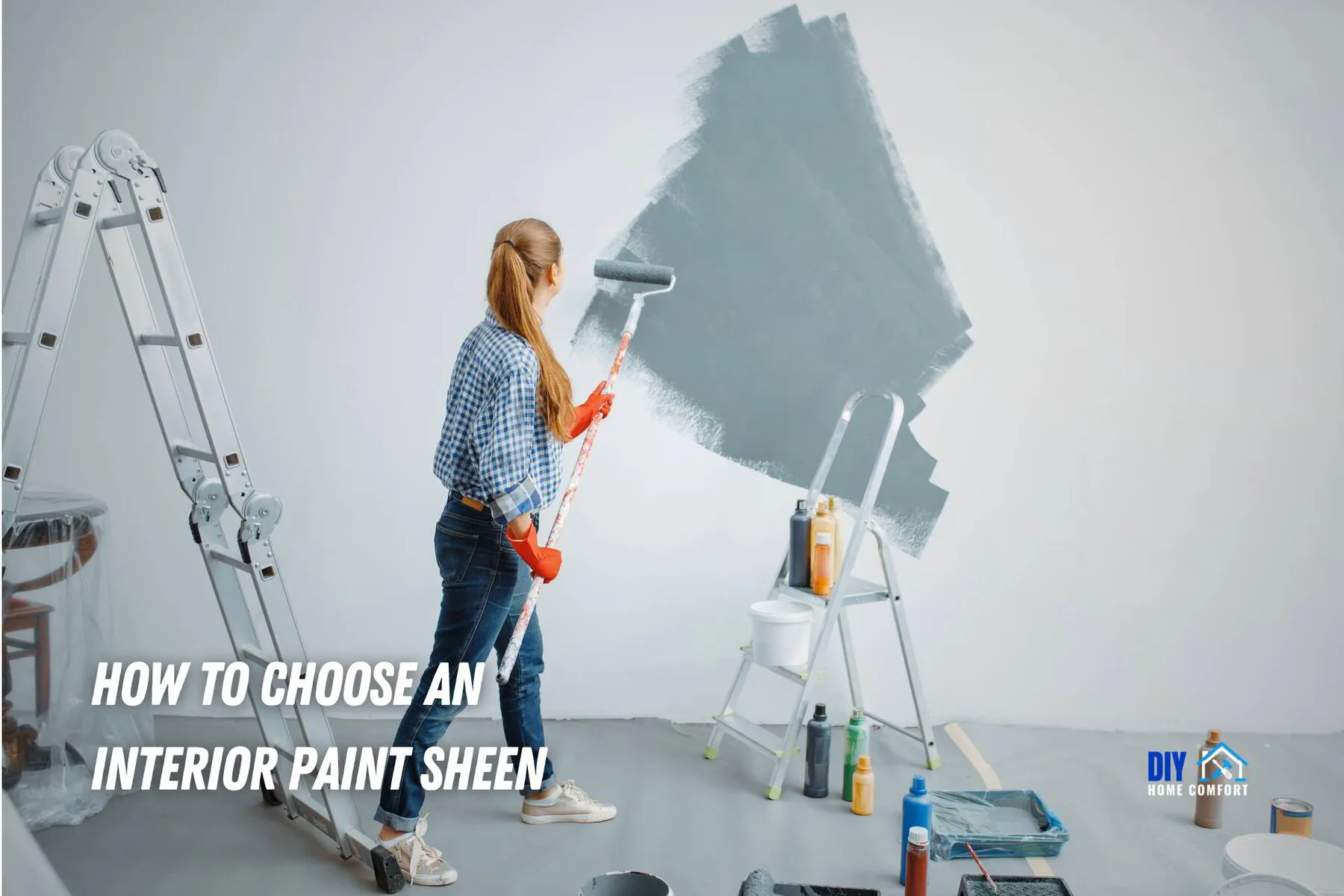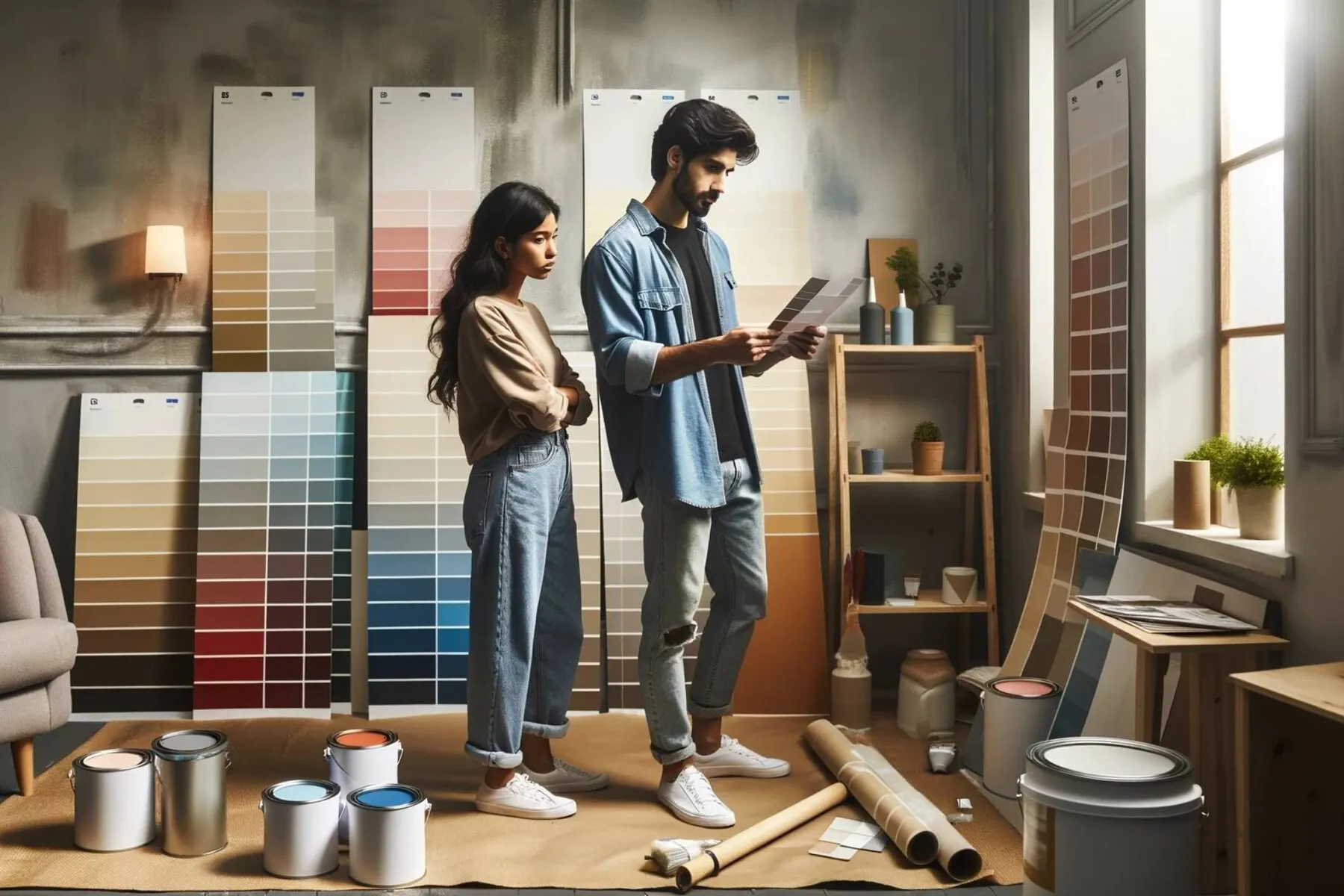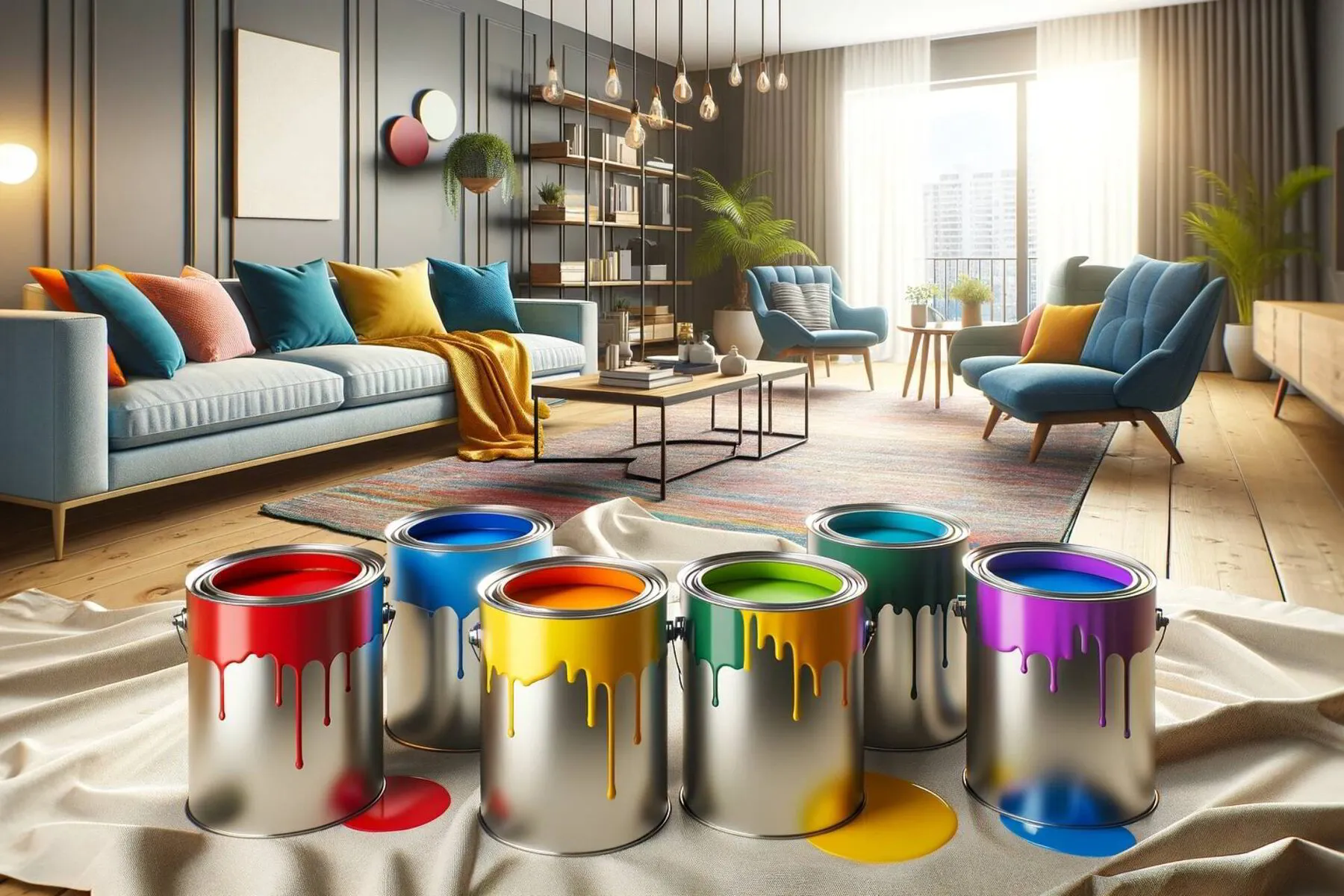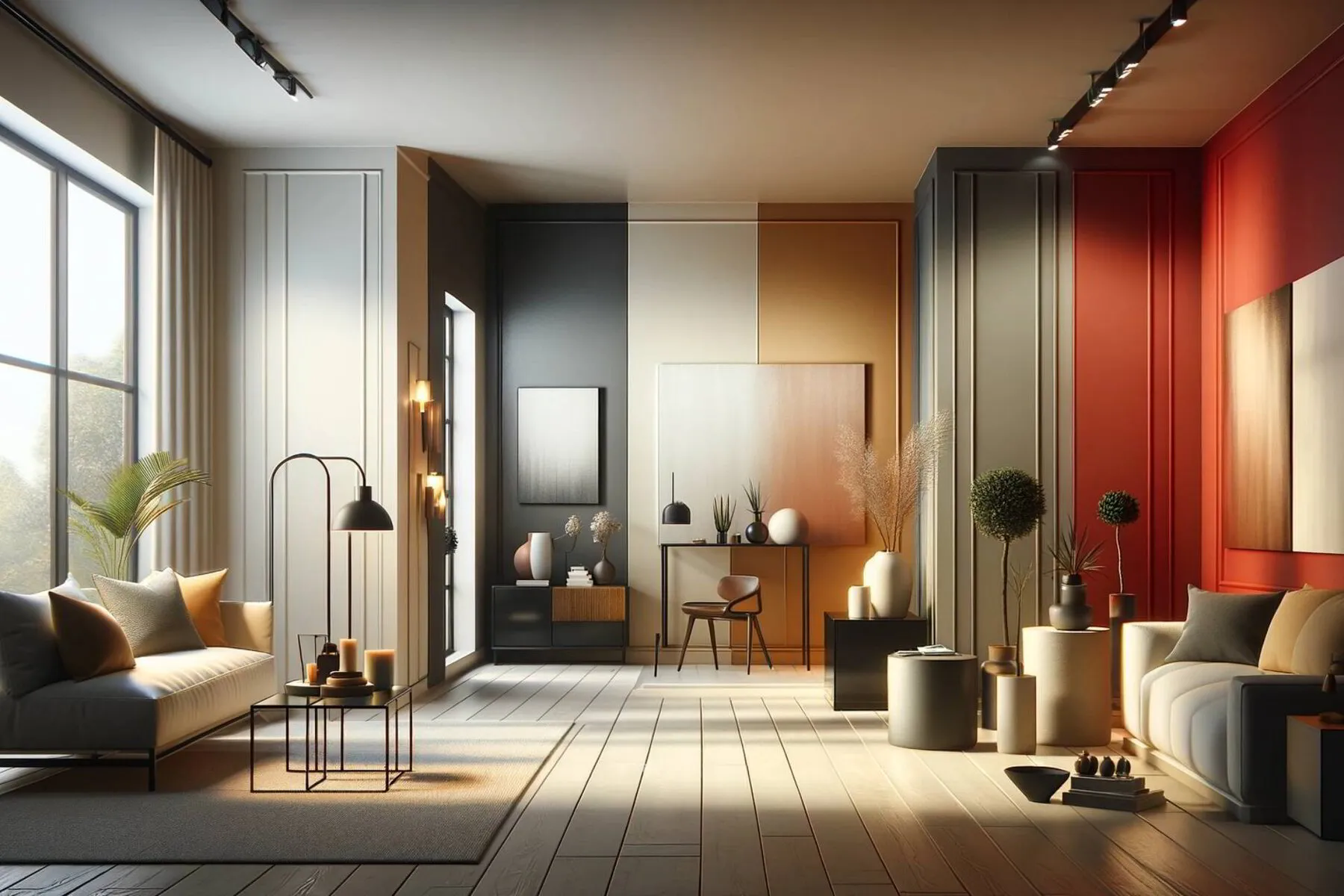In the realm of interior design, 'paint sheen' plays a pivotal role. It refers to the glossiness or reflectivity of a paint finish, profoundly influencing a space's aesthetic appeal and functionality.
Higher sheen paints like high gloss, or semi-gloss are reflective and vibrant, bringing energy to a room, and are ideal for areas needing frequent cleaning or facing high humidity, like kitchens and bathrooms.
Conversely, lower sheen options such as matte or eggshell offer a sophisticated, subtle finish that is excellent for masking surface imperfections but is more susceptible to damage.
The choice of paint sheen thus not only dictates the visual character of a room but also its practicality in terms of maintenance and durability. Selecting the right sheen is essential in achieving a balance between beauty and utility in any interior space.
📘 Key Takeaways
- Paint sheen significantly influences a room's aesthetic appeal and functionality, with higher sheens offering vibrancy and lower sheens providing a sophisticated finish.
- Gloss and high-gloss finishes are ideal for furniture and small areas, offering maximum shine and durability.
- Semi-gloss paints balance glossiness and subtlety, making them suitable for trim, doors, and cabinets.
- Satin and eggshell finishes are versatile choices for high-traffic areas and living spaces, offering durability and an ability to conceal imperfections.
- Flat and matte finishes are best for ceilings and low-traffic areas, excelling in hiding surface flaws and providing a sophisticated look.
Understanding Paint Sheen
Paint sheen is a critical aspect of paint finish, defined by its level of glossiness and light reflection. It significantly influences how paint appears once it dries and its interaction with light.
The sheen level determines the glossiness of the finish: a higher sheen results in a more reflective and glossy surface, while a lower sheen yields a more subdued and matte appearance.
This characteristic of paint affects the aesthetic quality of a painted surface, giving it a specific look and feel and playing a role in its functionality.
Sheen levels can impact factors such as durability, ease of cleaning, and the ability to hide or highlight imperfections on the surface. Therefore, choosing the right paint sheen is crucial in both interior design and practical application.
🎨 Gloss & High-Gloss Finish (70-90% Shine)
Gloss and high-gloss finishes, known for their maximum shine and reflectivity, are perfect for enhancing furniture and accent pieces with their exceptional durability and ease of cleaning.
Although they add a vibrant, luxurious feel, their high reflectivity and tendency to accentuate surface flaws make them less suitable for large interior wall spaces.
A high gloss paint finish is best used in smaller, detailed areas where its striking glossiness can elevate the overall aesthetic without dominating the room.
🎨 Semi-Gloss Finish (35-70% Shine)
Semi-gloss paints are famous for their moderate sheen, which balances glossiness and subtlety. Its durable finish makes it ideal for trim, interior doors, and cabinets, often subjected to handling and cleaning.
This sheen resists stains and is easy to clean, maintaining its appearance over time. Its reflective quality highlights details and provides a slight luster, making semi-gloss a go-to choice for practicality and aesthetic enhancement in high-contact areas.
🎨 Satin Finish or Pearl Finish (25-35% Shine)
Satin finish, or pearl, with its smooth texture and subtle luster, offers a versatile choice for interior design. Ideal for interior walls in high-traffic areas such as hallways and family rooms, it strikes a perfect balance between durability and aesthetic appeal.
Its resilience to handling and cleaning, coupled with a gentle sheen, makes it both practical and visually appealing, enhancing spaces with a touch of elegance while standing up to the demands of everyday use.
🎨 Eggshell Finish (10-25% Shine)
Eggshell finish, known for its low-luster appearance and non-reflective finish, expertly conceals imperfections, making it an excellent choice for most walls. Its subtle sheen softly diffuses light and hides minor surface imperfections and uneven textures.
Combined with a hint of elegance, this quality renders an eggshell finish particularly suitable for living areas and bedrooms, where a balance of aesthetic appeal and practicality is desired.
🎨 Flat & Matte Finish (0-10% Shine)
Flat and low-sheen paint, characterized by its lack of shine, excels at hiding surface flaws, such as bumps and scratches.
The non-reflective nature of flat paint makes it ideal for ceilings and low-traffic areas, where the focus is on a smooth, understated look rather than durability.
These finishes offer an even, velvety appearance, making them a top choice for spaces where a subtle, sophisticated aesthetic is desired, and high durability is not a priority.
Selecting the Right Sheen for Each Room
When selecting paint finishes and sheens for different rooms, consider the room's function and the desired aesthetic.
Here are some guidelines:
1. Bathrooms and Kitchens: Opt for a satin finish. Its durability and ease of cleaning make it ideal for these high-moisture areas. Satin resists mildew, stands up well to frequent cleaning, and its subtle luster adds a welcoming warmth.
2. Living Areas: The eggshell finish is a great choice. It provides a low-luster appearance that's perfect for rooms where you want a soft, inviting atmosphere. Its ability to hide imperfections makes it suitable for spaces used for relaxation and entertainment.
3. Bedrooms: Consider matte or eggshell finishes for interior walls. They offer a calm, soothing appearance and are good at concealing minor wall imperfections, which is desirable in a space for rest.
4. High Traffic Areas (Hallways, Playrooms): Semi-gloss or satin paint is recommended for durability and ease of cleaning.
5. Ceilings: Flat or matte finishes are typically used for ceilings to avoid drawing attention away from the room's main features and to hide surface flaws.
6. Trim and Doors: Semi-gloss or gloss finishes are suitable here as they highlight details and are easy to clean.
7. Special Considerations for Brick Fireplaces: Use a satin or eggshell finish for painting brick fireplaces. These sheens can withstand the heat and offer a warm glow, enhancing the fireplace's texture and character while being easier to maintain than flat finishes.
Remember, the choice of sheen can also be influenced by personal preference and the overall style of your home. These guidelines offer a starting point but feel free to experiment with different sheens to achieve your desired effect.
Tips for Choosing the Right Paint Sheen
When choosing paint sheens for different rooms, it's important to balance the sheen with its usage, considering the trade-off between durability and aesthetic appeal. Here are some tips to guide you:
1. Consider Room Traffic: High-traffic areas like kitchens, bathrooms, and hallways benefit from more durable, higher-sheen paints like satin or semi-gloss. These sheens withstand frequent cleaning and resist moisture well.
2. Aesthetics vs. Practicality: Living rooms and bedrooms are less prone to scuffs and stains than dining rooms and can use lower sheens like eggshell or matte. These sheens offer a more elegant and sophisticated look but are less damage-resistant.
3. Color Perception: Sheen can influence how we perceive color. Glossier finishes make colors appear brighter and more vibrant, whereas matte finishes give a softer and more muted look. Consider how the sheen will interact with your chosen color, especially under different lighting conditions.
4. Lighting Effects: High-gloss finishes reflect more light, which can help brighten a darker room. However, a high sheen might create unwanted glare in a brightly lit room. Matte or eggshell finishes, conversely, absorb light and can help reduce glare.
5. Surface Imperfections: Opt for a lower sheen if your walls have imperfections. Matte and eggshell finishes are better at hiding blemishes than their glossier counterparts.
6. Testing Sheens: Test a small area with your chosen sheen and color before committing. Observe it at different times of the day to see how both natural and artificial light affect its appearance.
Remember, the right balance of sheen can enhance a room's function and style, so consider both aspects carefully in your selection process.
Creative Uses of Paint Sheen
Explore the creative potential of paint sheen by experimenting with monochrome designs and patterns. Use the same color in different sheens to create subtle yet intriguing wall patterns.
For instance, alternate between matte and semi-gloss finishes to craft stripes, geometric shapes, or freehand designs. This technique adds depth and texture to your space without introducing new colors.
It's particularly effective in areas with good lighting, as the interplay of light and shadow will accentuate the different sheens, giving your room a dynamic and visually captivating look.
Conclusion
Choosing the right paint sheen for interior spaces is a crucial decision that balances aesthetics with practicality.
High-sheen paints like gloss or semi-gloss offer durability and ease of cleaning, making them ideal for high-traffic areas and surfaces prone to moisture.
On the other hand, lower sheens like matte or eggshell provide a sophisticated look and are excellent at hiding imperfections, suitable for living areas and bedrooms.
Satin finishes strike a middle ground with their subtle luster, versatility, and suitability for various rooms.
Remember, the sheen can significantly affect the perception of pain color and room lighting.
Experimenting with different sheens in your space, perhaps through test patches, can help you discover the perfect match that meets your functional needs and design aspirations. Embrace the variety of sheens available to enhance your home's unique character.
And if you want to learn more about interior design and its exciting possibilities for your home, don't forget to check out the rest of our interior design blog!
Thanks for reading!
📘 Related Reading: The 7 Elements of Interior Design
Lara Harding
Lara is a supporting author @ DIY Home Comfort. She's an experienced interior designer and decorator and a full-time mom. You can find out more about her here.




